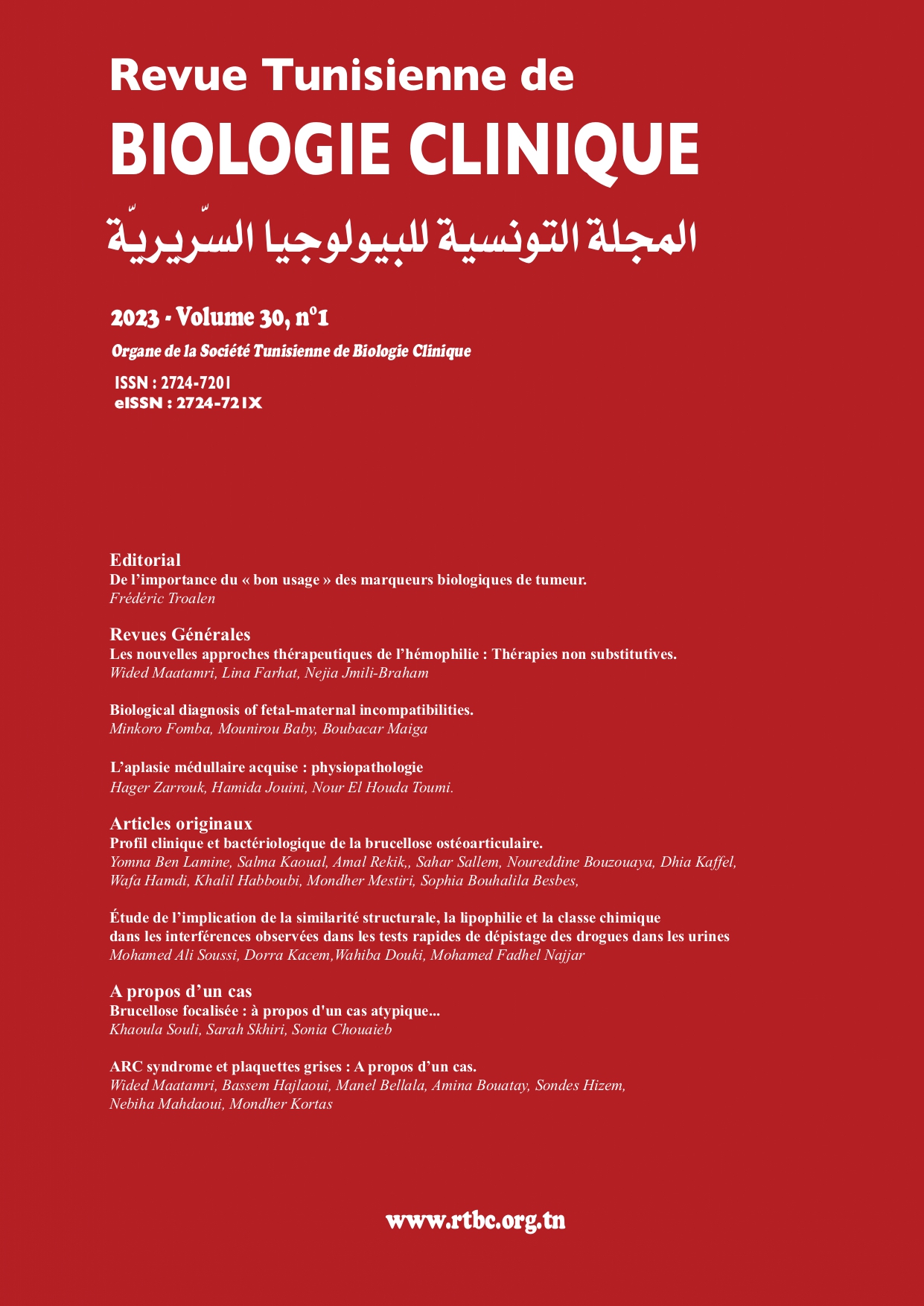Abstract
Arthrogryposis-renal damage-cholestasis (ARC) syndrome is a rare multi-systemic disease, autosomal recessive transmission and rapidly lethal in the neonatal period. It is due to the mutation of the VPS33B or VIPAR gene. The classic triad associates arthrogryposis, proximal tubulopathy and cholestatic jaundice with normal gammaglutamyltransferase. Malnutrition due to renal malabsorption, recurrent infections and hemorrhagic syndrome worsen the vital prognosis. A functional abnormality of the platelets is often associated with this syndrome, secondary to a deficiency in alpha granules which gives these platelets a « grey platelet » appearance. We report a new observation of this syndrome in a newborn from consanguineous parents. Cholestatic jaundice without hepatic cytolysis was discovered at the age of 20 days. The clinical course was marked by poor weight gain, arthrogryposis with limb amyotrophy associated with mild ichthyosis. Several episodes of recurrent infections and hematemesis revealed proximal tubulopathy and functional platelet damage. A blood smear stained with May Grunwald Giemsa was performed in the absence of thrombocytopenia and showed an agranular appearance of the platelets reminiscent of "grey" platelets. Primary hemostasis examination revealed a prolonged platelet occlusion time. But no von Willebrand factor abnormality was detected, pointing to a thrombopathy, frequently associated with this syndrome. The diagnosis of ARC syndrome was based on complex clinical data and facilitated by morphological analysis of platelets on blood smears.

This work is licensed under a Creative Commons Attribution 4.0 International License.
Copyright (c) 2023 Revue Tunisienne de BIOLOGIE CLINIQUE

